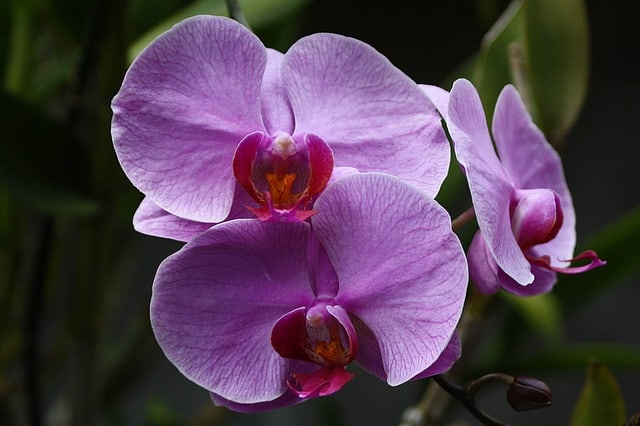Dendrobium kingianum is an orchid plant native to Australia. This beautiful plant is commonly called Pink rock orchid.
The plant gets the name because it grows on rocks. This plant may grow up to 15 spikes and gives out pink flowers in late winter to spring.
How to grow Dendrobium kingianum
In this article, you’ll learn how to care for your Dendrobium kingianum and see that caring for the Dendrobium kingianum plant indoors is easy.
Dendrobium kingianum temperature
Temperature plays a crucial role in the life of an indoor plant. You need to maintain consistent temperatures and make sure it doesn’t fluctuate too often.
Keep the room well ventilated. This dictates the temperature to a good extent. If the airflow is good, your Dendrobium kingianum can tolerate freezing temperatures to high temperatures like 104F.
The ideal temperature would be 40F to 85F. In the winters, make sure the temperature is above 40F. Slowly raise the temperature as the flower spikes begin to appear.
When do Dendrobium kingianum bloom?
You might be wondering by now, when these plants come to bloom. These plants are an anomaly when we talk about blossoms.
Dendrobium kingianum blooms in late winter to spring. So, when no other plant has flowers, your Dendrobium kingianum has ’em!
Dendrobium kingianum potting mix
All types of potting mixes that work for the other orchid types will work well. You can grow your Dendrobium kingianum on a mount or bark and pebble mix.
In my experience, they thrive in charcoal+bark mixture. If they are being grown in/near their native area, then sphagnum/lava rocks won’t work.
Dendrobium kingianum Repotting
Bark+Perlite or Charcoal+bark would make great potting mixes for Dendrobium kingianum. Repot the plant once in a year or two.
Every time shift the plant into a bigger pot with bark+perlite mix and leave room for the next season’s growth.
The rule of thumb is to repot the plant at the beginning of the growing season. When you repot the plant, remove the old and dried out leafless canes.
Tip: Moss in the potting mix is harmful for these plants, especially in the winter.
Dendrobium kingianum keiki care
Keikis are clones of the mother orchid plant. They may even grow flowers. Keikis are good for propagating Dendrobium kingianum.
You may like them, but know that they grow at the expense of the blooms. It’s recommended that you get rid of them just as they appear.
You can use keikis for propagation.
Dendrobium kingianum propagation
After the Keiki develops three or four roots, cut it off leaving 2 inches above and 2 inches below the node. These keikis are ready to rock!
Plant these keikis in a porous medium like composted fir bark. Do not place these in direct sunlight.
Dendrobium kingianum Watering
You may need to water your Dendrobium king. once or twice a week in the late spring to early fall. You may fertilize in this period if you want to.
In the winter to spring, water your Dendrobium kingianum less frequently. Do not fertilize the plant at all during this period.
If you follow this rule you’ll see healthy and abundant blossoms.
How to make Dendrobium kingianum bloom?
A local gardener, a friend of mine gave me a few Dendrobium keikis 3 years ago. I was excited. But I couldn’t get them to bloom initially. I did succeed eventually.
Many orchids take a year or two to establish themselves and start blooming. So, wait patiently if it is too early.
Just take good care of your Dendrobium kingianum and provide optimal conditions. They will bloom once they get acclimated to your indoors, filling your indoors with their fragrance in the afternoons.
Why is my Dendrobium leaves turning yellow?
Dendrobium leaves turn yellow due to root rot. If your Dendrobium is in sphagnum moss, this is probably the case.
Sphagnum creates waterlogged conditions that cause root rot. It’s better to have a draining hole in your pot.
Transfer this plant into an orchid-specific pot and the medium should be well-draining.
To fix:
- Clean off the roots carefully. Clip off any affected carefully using sterilized clippers/scissors.
- Dab the mutilated roots with cinnamon.
- Let the plant air dry for a day or two.
- Buy a small pot for your orchid. Be conservative when choosing your pot, they grow better in smaller pots.
- Soak the medium for several hours before repotting your Dendrobium. Throw in some pebbles in the pot before adding the medium to enhance drainage.
Too much sunlight
More sunlight than needed may also cause yellowing of the leaves. Give your plant some dappled eastern exposure.
Your Dendrobium will recover soon and you’ll see new cane growths.

